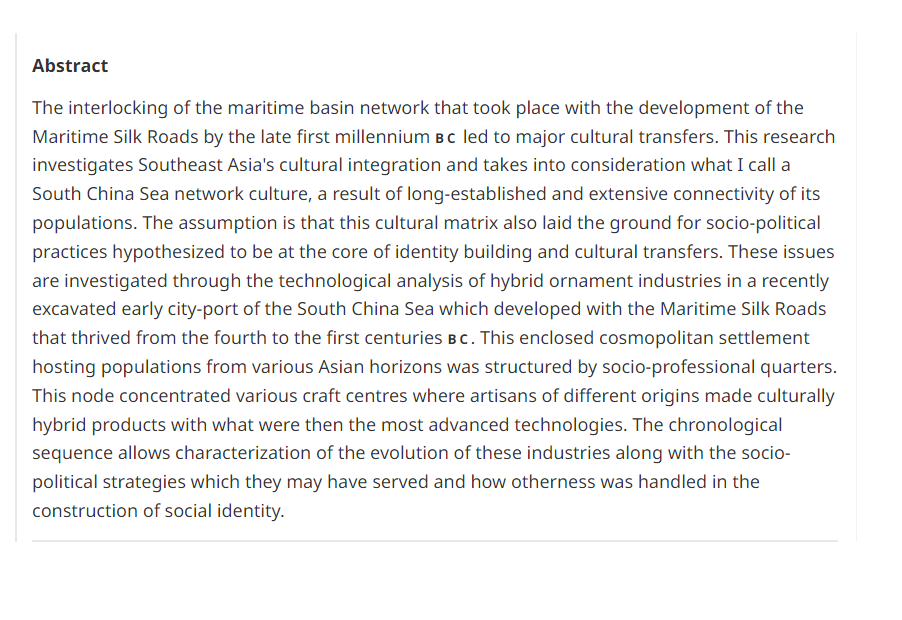|
|
|
|---|

| ชื่อผู้แต่ง | Bérénice Bellina |
| วารสาร/นิตยสาร | Cambridge Archaeological Journal |
| ปีที่ | October, 2014 |
| ฉบับที่ | Vol 24, Issue 3 |
| หน้าที่ | pp. 345 - 377 |
| ภาษา | English |
The interlocking of the maritime basin network that took place with the development of the Maritime Silk Roads by the late first millennium BC led to major cultural transfers. This research investigates Southeast Asia's cultural integration and takes into consideration what I call a South China Sea network culture, a result of long-established and extensive connectivity of its populations. The assumption is that this cultural matrix also laid the ground for socio-political practices hypothesized to be at the core of identity building and cultural transfers. These issues are investigated through the technological analysis of hybrid ornament industries in a recently excavated early city-port of the South China Sea which developed with the Maritime Silk Roads that thrived from the fourth to the first centuries BC. This enclosed cosmopolitan settlement hosting populations from various Asian horizons was structured by socio-professional quarters. This node concentrated various craft centres where artisans of different origins made culturally hybrid products with what were then the most advanced technologies. The chronological sequence allows characterization of the evolution of these industries along with the socio-political strategies which they may have served and how otherness was handled in the construction of social identity.

The interlocking of the maritime basin network that took place with the development of the Maritime Silk Roads by the late first millennium BC led to major cultural transfers. This research investigates Southeast Asia's cultural integration and takes into consideration what I call a South China Sea network culture, a result of long-established and extensive connectivity of its populations. The assumption is that this cultural matrix also laid the ground for socio-political practices hypothesized to be at the core of identity building and cultural transfers. These issues are investigated through the technological analysis of hybrid ornament industries in a recently excavated early city-port of the South China Sea which developed with the Maritime Silk Roads that thrived from the fourth to the first centuries BC. This enclosed cosmopolitan settlement hosting populations from various Asian horizons was structured by socio-professional quarters. This node concentrated various craft centres where artisans of different origins made culturally hybrid products with what were then the most advanced technologies. The chronological sequence allows characterization of the evolution of these industries along with the socio-political strategies which they may have served and how otherness was handled in the construction of social identity.